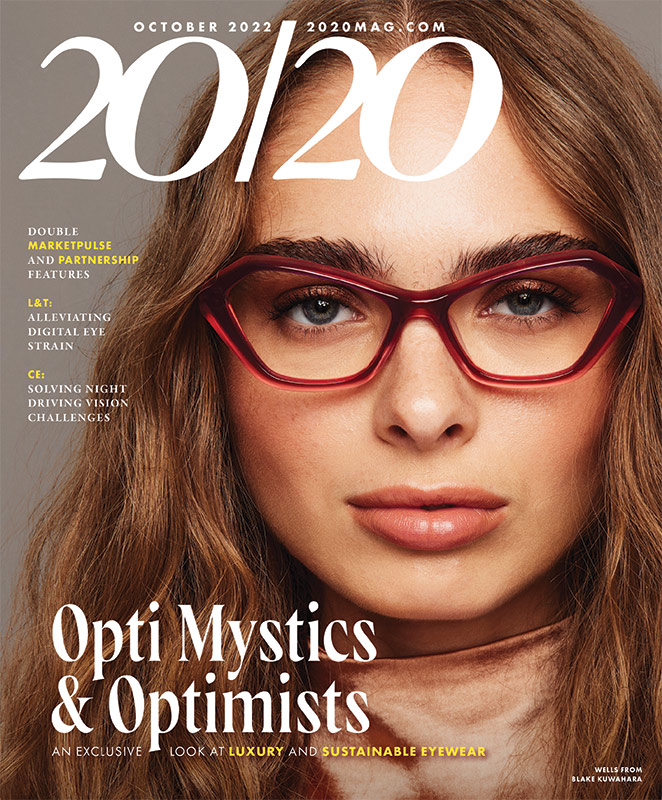
By Linda Conlin, ABOC, NCLEC
Merriam-Webster defines luxury as “having an appealing rich quality, feeling or showing a desire for fine and expensive things,” but it can mean different things to different people. A recent article in Forbes, “Luxury Consumers Haven’t Gone ‘Post-Aspirational,’ Rather They Aspire for Different Things,” quotes Dr. Martina Olbertova, the world’s leading expert on creating meaning in luxury, “The essence of luxury is its inner substance, like timelessness, well-crafted handmade things with functionality and durability that transcend the present moment.”
How can we identify the luxury consumer, and how can we entice them to be our customers? According to Bain & Company, a management consulting company, Millennials accounted for 85 percent of the luxury market’s growth in 2017, and they bring different values about luxury consumption across product categories. They are also influencing other generations with their values, effectively creating a “Millennial Mindset.” Consumers with the Millennial Mindset are buying products as a way of expressing their passions and interests. Among their passions and interests are sustainability, authenticity and corporate social responsibility. Luxury brands need to incorporate those factors into their brand stories.
Gen Z and Millennials also look for a personal experience with their luxury purchases, and that’s the perfect opportunity to share the brand story. A recent article in Vision Monday noted that only 23 percent of luxury goods sales in 2020 took place online. Considering that in-store shopping was curtailed during the pandemic, the eyewear industry may now see the results of pent-up demand for that personal luxury purchase experience.
What defines luxury eyewear? According to Global Market Insights, luxury eyewear encompasses “innovative frame designs engraved with exquisite materials. The eyewear is specially designed to showcase individuality, luxury, social status, strong fashion statement and quality. Luxury eyewear caters to the demands of sophisticated consumer groups across the globe.” Luxury feels bespoke even when it isn’t. Eyewear should feel specifically chosen, designed and unique to each individual customer. To meet that ideal, manufacturers and designers of luxury eyewear are developing eyeglasses and sunglasses in new styles, shapes, sizes, colors and designs.
Why is the luxury eyewear market important? A 2019 Global Market Insights report notes, “Luxury Eyewear Market size exceeded over 71 million units with an industry value of approximately USD 41 billion in 2018, and the industry is estimated to grow at a CAGR (Compound Annual Growth Rate) of over 3 percent from 2019 to 2025.” The report points to these growth drivers: a rise in the number of consumers with high purchasing power, growing eye health awareness, increasing demand from eyewear connoisseurs, and the Millennial and Generation Z mindset effect. Clearly, luxury eyewear is a lucrative market segment with excellent growth potential.
How can we appeal to and keep the luxury eyewear consumer? First, know your consumer. Millennials and Gen Z are looking to the present to help them achieve their future aspirations. They want to be recognized now as sophisticated with a personal style and having status with the ability to make a difference in the future. They express themselves with clothing, accessories and eyewear to send that message, and will spend more on products that align with their ideal. This group will have brand loyalty when they know the brand story, especially concerning quality, design, corporate social responsibility and sustainability. Sales reps are an invaluable resource for a brand story, and when telling it to your customer, be sure to include details that make the brand unique.
In addition to a luxury product, the luxury consumer expects a personal luxury purchasing experience. To deliver a high-quality experience, opticians must be experts in the product offerings and masters of their craft. Opticians must relate to the customer and communicate that they are selecting the lens/frame combination that was meant for no one else. The prerequisite to be able to deliver a product at this level is excellence.
The practice must also create and communicate its own story to resonate with the luxury consumer. Attention to every detail to create a seamless personal experience for the consumer is paramount. Consider the office ambience. Is it clinical, or welcoming and interesting? Luxury products command attractive, uncluttered and inviting displays. Even office furnishings, style, staff appearance, music, signage, colors, smells or packaging (please don’t deliver a luxury frame from a plastic lab tray!) must all send the message that the practice is upscale with elegant products and a unique experience. With attention to the luxury niche market, your optical business can be the reason people come to you, and keep coming, for no other reason than to buy eyeglasses.













